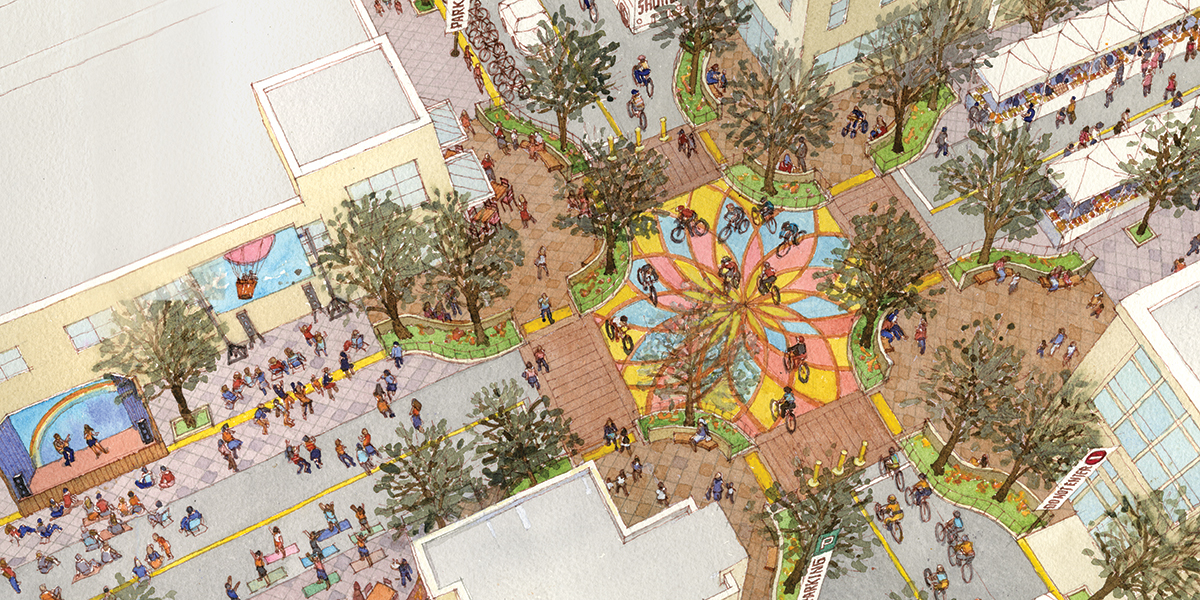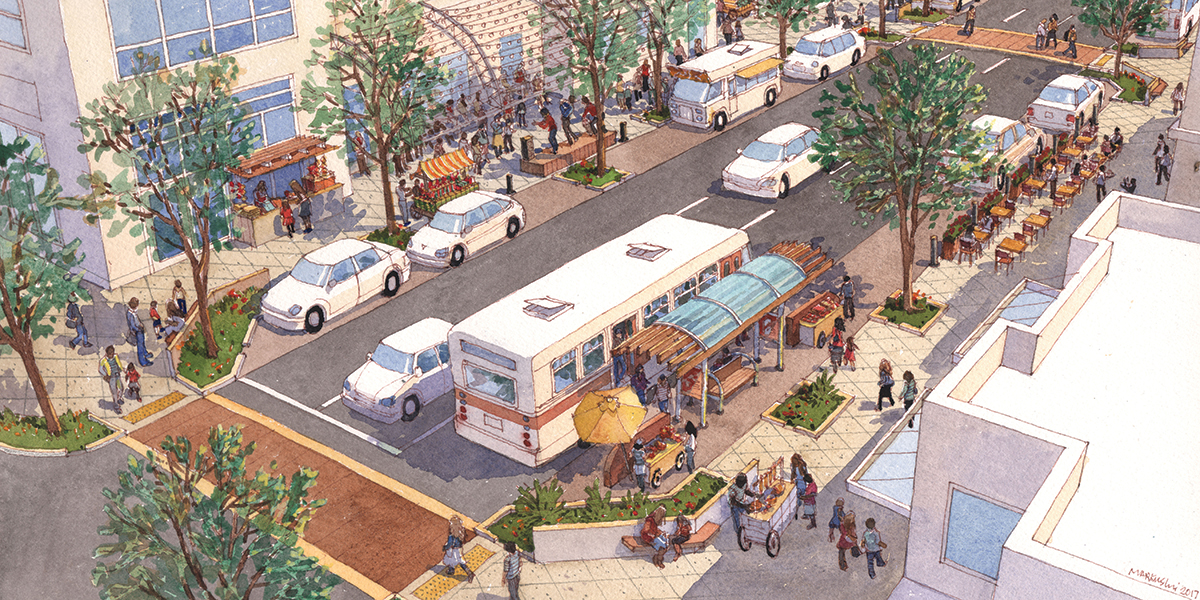We used to grow up on the street. We’d play, we’d walk to the neighbors with a casserole for the block potluck, we’d ride bikes, play games, hang out, socialize. So would our pets. Drivers knew enough to watch out for us. We all survived and thrived. We want that again. Our book, Streets Reconsidered is how we get there. In this series of excerpts we'll share some thoughts and design guidelines to get you started (Read Part 2: Inclusive Design).
Let’s go the next step beyond travel lanes and bike lanes, sidewalks and crosswalks. Let’s design streets for living, not just driving.
In the 1950s, construction of a national roadway network led to unprecedented growth in private transportation and mobility, and greatly contributed to the nation’s economic output. It made the automobile the preferred mode of transportation for most Americans. The automobile took over the road and overwhelmed other uses of the street. Street designs in the U.S. were based on the turning radius of fire trucks; the main goal was to keeping vehicular traffic flowing. The result is often overbuilt streets that take tremendous amounts of public space.
Today the vast amount of land devoted to roads in the U.S.—more than 4 million miles of paved and unpaved roads—is more than the land for either parks or government buildings. It’s one-third of all city lands.
But the typical American car is parked 95 percent of the time.
That’s a fatal flaw in America’s transportation infrastructure policy: It’s still vehicle-oriented planning. Much of transportation planning is based on polices, design manuals and ways of thinking of the 1990s. We’re building more and more roads and parking with the aim of shaving a few seconds off of a half-hour commute. And we’re not investing at the same pace in technology, transit, maintenance, and ensuring a multi-modal mobility balance on our streets.
But the future of transportation—and our streets—is already here. There will be fewer cars driven in most major cities. And they will be different because digital technology has changed everything. We now have the tools to incorporate uncertainty into transportation planning and can ensure that transportation investment decisions reflect the fact that driving will continue to decline in the developed world.
The changed driving habits among Millennials, and those even younger, must be factored into community and transportation planning, starting now, to ensure that transportation investments serve the needs and desires of communities today and in the decades to come. And in the developing world, there is the opportunity to learn from the historic prioritization of cars—and build it better.
With fewer cars on the street, the very nature of streets can change. Streets are the public realm. By designing for what might be coming in the future—driverless cars, big data traffic operations, no cars at all—cities can create streets that change to meet changing needs. Streets can become true public space, with social gathering, events, play, commerce and urban agriculture and green space.
The article is the first in an 8-part series excerpted from Streets Reconsidered: Inclusive Design for the Public Realm. Purchase the book using the promo code MIG19 for a 20% discount through Routledge (with free shipping!). Coming next month, Part 2: Inclusive Street Design Principles.
Daniel Iacofano, PhD., FAICP, FASLA, has over 30 years of experience in community-based urban planning and design and has consulted with communities worldwide.
Mukul Malhotra, one of the creators of re:Streets, works on the ground with cities and communities to sustainably redevelop streets and improve the built environment for everyone.


